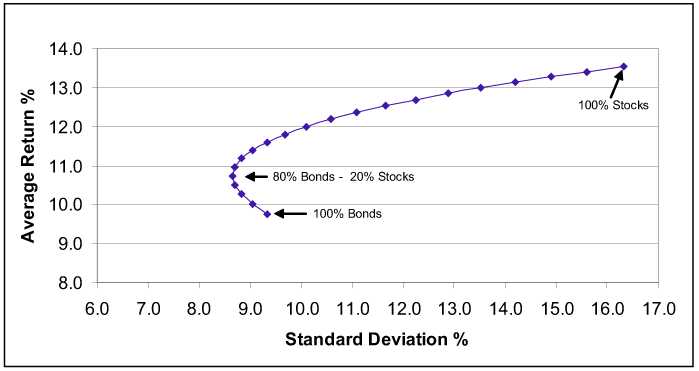How to Determine Your Asset Allocation
Post on: 2 Апрель, 2015 No Comment

Asset allocation is probably one of the hardest parts about investing because while we all know its important, we dont really know what were supposed to do. We know that diversification is crucial but we arent entirely sure why outside of dont put all your eggs in one basket. Fortunately, there are some simple systems out there that can shed some light onto the asset allocation question.
This post is part of the Bargaineering Annual Financial Review week series where we take a closer look at the four major facets of personal finance and see if we can do better. This post is part of day three – taking a closer look at your investments.
SECs Guide to Asset Allocation
The first thing you should do is read what the SEC has to say about asset allocation and diversification. The page doesnt have any big revelations but it does give you a basic understanding of the importance of proper asset allocation, why you need to diversify, and how you need to revisit these issues at least once annually to rebalance.
The guide itself doesnt talk about specific allocations. It says you need to establish your goals, think about your time horizon and risk tolerance, then pick investments that have the best chance of getting you there. They are very general when it comes to discussing asset classes (stocks, bonds, cash) and avoid making any specific recommendations. They do point to an Asset Allocator calculator by the Iowa Public Employees Retirement system.
This post is part of the Bargaineering Annual Financial Review week series where we take a closer look at the four major facets of personal finance and see if we can do better. This post is part of day three – taking a closer look at your investments.
The big takeaway from all this is that regardless of what you decide for your asset allocation, the most important thing is that you actively make the decision. Dont just accept your 401ks default allocation, make an educated decision and you will be much better off.
So, in light of that, lets talk about some common allocations.
Lazy Portfolios
Lazy portfolios arent portfolios that lack pep in their step, theyre portfolios designed for the investor who doesnt want to spend too much time analyzing and allocating. The lazy investor, if you will.
There are several lazy portfolios but the classic couch potato portfolio is a 50% allocation in the Vanguard 500 Index Fund (VFINX ) and a 50% allocation in the Vanguard Total Bond Fund Index Fund (VBMFX ). The idea is that you want something simple, you know Vanguard funds are cheap (and it takes just a few seconds to confirm this), so why not set an allocation like 50-50, set it and forget it?
The risk is that while setting an allocation is better than taking what your plan gives you, you havent actually made an active decision based on your goals. You simply chose a plan that has gotten some ink in the papers. Of course, keeping things simple means youre more likely to stay on top of it (its easy to rebalance a portfolio of two assets!) so being lazy does have its merits.
120 Minus Age
This is a classic investment rule of thumb. You should take 120, subtract your age, and put that percentage of your retirement assets in stocks. The rest should be in bonds. So if youre 20, all of your investments should be in stocks and none should be in bonds. As you age, the asset allocation adjusts from risky (stocks) to safety (bonds).
While its better than settling for the default, this rule may be riskier than you are willing to stomach. It also almost too basic a rule because it only sets allocation between stocks and bonds. Theres no discussion of what kind of stocks (domestic vs. international, large cap vs. small cap, etc.) and its one-dimensional nature seems to be its downfall. Of the three easy approaches, this one is probably the weakest.
Target Retirement Funds
Target Retirement funds, made popular in the last five years or so, are mutual funds that adjust their holdings as the years pass. Also known as Lifecycle and Target Date funds, they are typically named with a target year. So a Target Retirement 2040 fund is designed for someone looking to retire in 2040. They invest in a mix of assets with the mix becoming more conservative as the target retirement date draws closer.
Target retirement funds are easy because they set the allocation for you but they can cause you to become complacent. Since you dont have to rebalance, the fund takes care of that for you, you may forget to rebalance your other assets. In fact, target retirement funds work best when you invest all of your retirement in the funds. If you dont, your other assets throw your allocation out of alignment since the funds assume 100% of your assets are in that fund. Again, its an easy solution thats better than nothing, but nothing beats careful planning.
Ive offered up three different options, none of which are ideal but all of them are better than sticking to your 401(k) default allocation. Its up to you to decide which one works best for you because theres no magic allocation that will always work for everyone, as this last years stock market performance has shown. In the end, its about creating a plan and sticking to the plan. If things go awry, they go awry, but at least it was because of careful planning and not haphazard guessing (sometimes, its the best you can do).
If you have any recommendations on how to set an asset allocation, what you do to help planning, please let us know because I think most people have difficulty with this topic.














